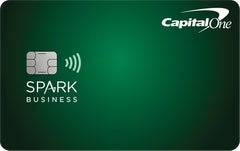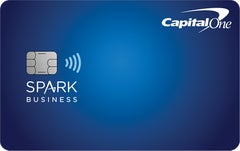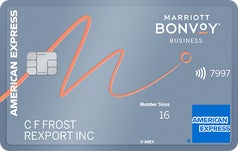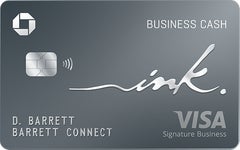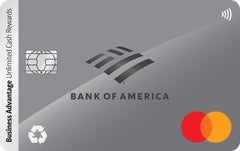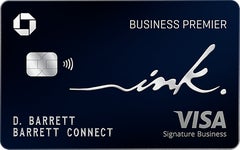The American Express Blue Business Cash Card is a fantastic choice for new or small-business owners who know their budget and want a rewards card to help with business spending. It includes a high flat rewards rate, an intro APR offer on new purchases and its most valuable benefit, the Expanded Buying Power feature, which allows you to spend more than your credit limit with no fee, if necessary (conditions apply).
Rewards: A high flat cash back rate
Earning cash back with the Amex Blue Business Cash is simple: All purchases will earn 2 percent cash back until you’ve spent $50,000 in combined purchases in a calendar year. Then, you’ll earn 1 percent back for the remainder of the year.
As far as no-annual-fee business cards go, flat-rate 2 percent cash back is one of the highest rates available. Although you only earn 2 percent back on your first $50,000 in combined purchases each year (after which your rate drops to 1 percent), the average small-business owner should still have plenty of room to earn rewards
On the other hand, plenty of competing business cards offer unlimited cash back at a slightly lower flat rate of 1.5 percent for no annual fee and no spending cap. If you maximize the Blue Business Cash’s 2 percent rate and spend $50,000, you’ll earn $1,000 in cash back. With a card that has an unlimited 1.5 percent cash back rate, you’ll have to spend a little more than $66,600 to earn the same amount back.
Review your business spending and run a little match to determine if you’ll earn more with unlimited 1.5 percent back or the Blue Business Cash’s capped 2 percent rate.
Fees: No annual fee and an adequate intro APR period
If you’re looking for a card that’s light on ongoing costs, Amex Blue Business Cash charges no annual fee and provides a decent intro APR period for new purchases, which might give you breathing room for a large expense. Plus, the Expanded Buying Power feature lets you go over your credit limit without an over-limit fee (depending on payment history, credit record and financial resources). Just be careful to pay the over-limit amount and your minimum payment due each month to avoid the 29.99 percent variable penalty APR.
If you travel abroad for business or make a lot of foreign transactions, the card’s 2.7 percent foreign transaction fee is another potential cost worth considering. While foreign transaction fees are fairly common, a cash back card with no foreign transaction fee can save you from added costs.
Cardholder perks: The Expanded Buying Power feature is stellar
As a no-annual-fee card, the benefits on this card aren’t particularly robust, but the Expanded Buying Power perk may provide small businesses a bit of a lift in a pinch. If you’re faced with a sudden expense or a terrific opportunity, you can spend beyond your credit limit with no over-limit fee. But keep in mind that purchases are approved on a case-by-case basis.
This benefit gives your small business card temporary purchasing power you may not otherwise have. While the amount you can spend above your credit limit isn’t unlimited, it adjusts with your card use, payment history, credit record and other factors. This can play well with your wallet so long as you manage your money responsibly and adjust to the higher demand placed on top of your regular expenses.




